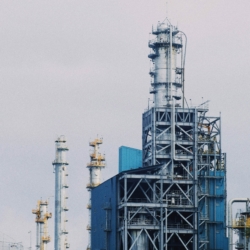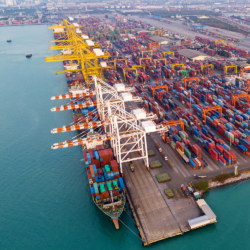Healthcare M&A report uncovers how strategic dealmaking is driving innovation & growth
The healthcare sector remains one of the most active in terms of mergers and acquisitions (M&A), demonstrating resilience and strategic innovation even in the face of evolving market conditions. According to the latest Translink Corporate Finance M&A Healthcare Insights report, 2024 continued to see robust transaction activity, despite a slight decline in deal volumes compared to the previous year.
M&A activity in 2024
In 2024, the healthcare sector witnessed a small decline in the number of transactions, with 4187 reported deals compared to 4225 in 2023. While this represents a minor decrease, the number of transactions remained high and comparable to pre-Covid levels. The healthcare industry’s M&A landscape is largely driven by strategic buyers seeking growth, market consolidation, and innovation, which continue to fuel deal activity.
The total value of deals in 2024 was approximately 30% lower than in 2023, however, key players in the healthcare industry remained active. They focused on strategic acquisitions to enhance their pipelines, expand service lines, and drive operational efficiencies. While 2024 saw a lack of ‘mega mergers’, transactional activity remained strong, underscoring the sector’s resilience.
Innovation was a key motivator for M&A deals in 2024. Acquiring companies sought transformative opportunities, particularly in emerging technologies such as biotech breakthroughs, AI analytics, and diagnostic tools. Deal multiples remained robust as acquirers targeted highly sought-after assets, particularly those at the forefront of innovation.
Biotechnologies
- Deal volume: M&A activity in biotechnology fell from 1010 reported transactions in 2023 to 897 in 2024, reflecting a slight decline in the sector’s M&A activity as companies consolidate their portfolios and adapt to regulatory changes.
- Key drivers:
- Pipeline expansion: Biotech companies are strategically acquiring to rebuild drug pipelines as patents for core products expire.
- Regulatory navigation: M&A activities combine biotech innovation with pharma’s expertise in navigating regulatory challenges and commercialising new drugs.
Pharmaceuticals
- Deal volume: Pharmaceutical sector deals rose from 516 reported transactions in 2023 to 643 in 2024, driven by the need to rebuild pipelines and the growing demand for high-value assets in key therapeutic areas.
- Key drivers:
- Patent loss and pipeline expansion: Large pharmaceutical companies are focused on replacing expiring patents and expanding their product pipelines through M&A activity.
- Innovation and R&D: M&A deals are increasingly focused on acquiring innovative drugs to reduce the risks associated with in-house research and development.
- Regulation: Cross-border M&A activity provides opportunities to access new markets while navigating complex regulatory hurdles.
Medical Facilities
- Deal volume: Transactions decreased slightly from 1421 reported in 2023 to 1344 in 2024, reflecting a slight pullback in hospital acquisitions. However, consolidation efforts continue to gain momentum as healthcare providers seek greater operational efficiencies.
- Key drivers:
- Economies of scale: Healthcare providers continue to consolidate, seeking cost synergies and enhanced buying power.
- Specialised services: The influx of private equity is driving the consolidation of hospitals and healthcare facilities, integrating specialist services and expanding regional care offerings.
Medical Equipment, Consumables, and Services
- Deal volume: This sector saw stable activity, with 1278 reported transactions in 2023 and 1279 in 2024, indicating consistent growth driven by the increasing demand for medical equipment, consumables, and integrated services.
- Key drivers:
- Market expansion: M&A strategies are helping companies diversify and expand their market reach, particularly in response to evolving industry demands.
- Long-term predictable growth: The ageing population and growing healthcare needs make this sector attractive to investors seeking lower-risk acquisition opportunities.
Key trends shaping the industry
The report identifies several critical trends shaping the healthcare M&A landscape:
- Accelerated firepower: Both healthcare players and private equity sponsors possess significant cash reserves, ready to be deployed in strategic acquisitions.
- Valuation stability: Post-Covid valuation fluctuations have stabilised, bringing greater investor confidence and certainty.
- Portfolio optimisation: Healthcare companies are increasingly assessing and divesting non-core assets to focus on high-growth areas.
- Cutting-edge technology: Technological advancements, particularly in cellular therapies, mRNA, IT, and data analytics, continue to drive M&A activity.
- Profit improvement: Consolidation within the sector offers economies of scale, increased buying power, and enhanced operational efficiency.
Looking ahead: What to expect in FY’25
The report forecasts a strong resurgence in healthcare M&A activity in 2025 as broader economic conditions stabilise. With the cost of capital expected to decrease, private equity firms and large corporations will actively seek new technologies, innovative solutions, and scalable business models to acquire. Despite a slight dip in the number of transactions and total deal values in 2024, healthcare M&A remains highly resilient, driven by strategic innovation, technology, and the need for consolidation.
As we move into 2025, expect an uptick in activity as healthcare companies and investors continue to seek transformative opportunities in biotechnologies, pharmaceuticals, medical facilities, and medical equipment. With strong cash reserves and a focus on operational efficiencies and growth, the healthcare M&A landscape is poised for a promising year ahead. Translink Corporate Finance, with over fifty years of experience in mid-market M&A and deep healthcare industry expertise – is your partner to get the deal done.



